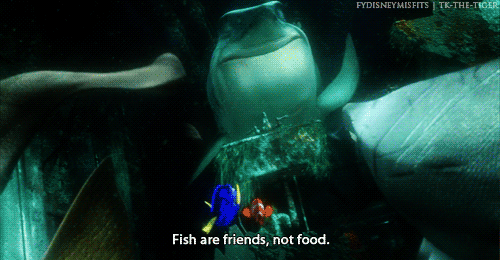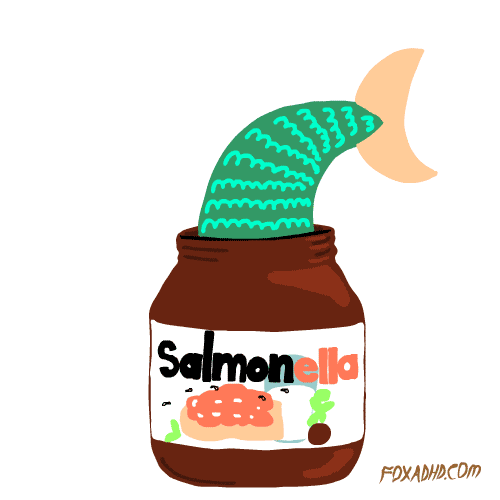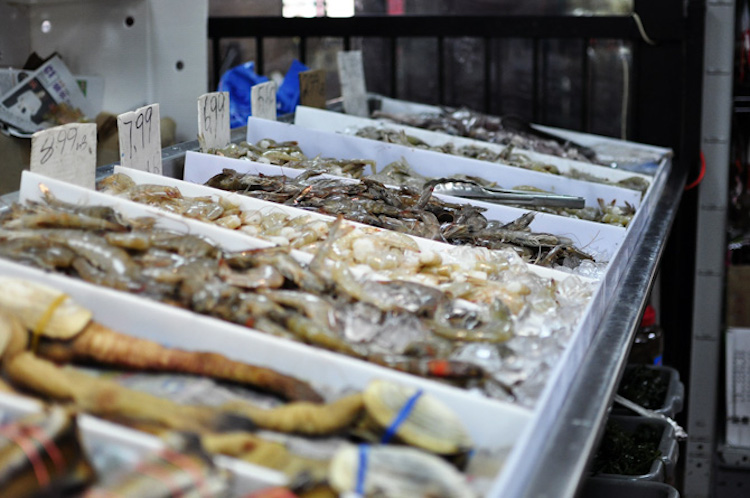Farm-raised fish have gotten a pretty bad rap the last couple years, but that doesn’t mean you should always choose wild-caught. Both types of fish have lots of pros and cons so, in reality, choosing a quality fish is a complicated process.
It may be impossible to make a blanket statement about what type of fish is better. However, recent changes in the U.S. aquaculture industry has certainly increased the number of reasons to pick farm-raised over wild-caught.

GIF Courtesy of paperfury.com
In 2014, after 10 years of development, the World Wildlife Fund released 100 pages of fish-farming regulation. U.S. fish farms must meet these regulations in order to sell their product.
These extensive regulations focus on reducing pollution, keeping the fish contained, improving the fish’s food, and eliminating contaminants. Due to these regulations, fish raised in U.S. farms actually may be better than wild-caught fish. Here’s why:
1. Health Benefits

Photo by Jocelyn Hsu
Wild-caught and farm-raised fish are nutritionally equivalent in most areas. The biggest difference between the two comes from their omega-3 fat content. In the past, research showed that wild-caught fish had higher levels of this beneficial fat, but fish farms have begun to feed fish algae, a primary source for omega-3. It’s difficult to concretely say that all wild-caught fish have more health benefits than all farm-raised fish.
2. Contamination Possibility

GIF courtesy of giphy.com
In 2004, one study found that farm-raised fish had increased levels of PCB, a chemical that could cause cancer. This study has been cited as a reason not to eat farm-raised fish, but its methodology has been criticized by many scientists. More recent research shows that health benefits outweigh the possibility of contamination.
Another large concern with farm-raised fish is the use of pesticides and antibiotics. However, these have been outlawed in U.S. farms. Also, fish that are typically farm-raised, such as catfish, tilapia, and salmon, tend to be lower in mercury. On the other hand, high-mercury fish, such as swordfish, king mackerel, tilefish, shark, and tuna are usually wild-caught.
When compared to wild-caught fish, which can be naturally exposed to toxins, U.S. farm-raised fish are about equally as likely to be contaminant-free. As long as you check to make sure it was raised in the U.S., you can be confident of your fish’s cleanliness.
3. Environment and Sustainability

GIF Courtesy of netanimations.net
Wild-caught fish are not necessarily better for the environment. Overfishing of wild-caught fish continues to be a major environmental threat. The process of transporting wild-caught fish is also problematic.
As reported by WTOP, Mary Ellen Camire, professor of food science and human nutrition at the University of Maine, explains, “You have to send the fishing boats out into the ocean, they catch the fish and then have to come back, then take their truck to market, so [wild-caught fish] are not very carbon-footprint friendly.” On the other hand, fish farms can be built closer to or even within cities decreasing the amount of transportation.
In the past, fish farms ground up tiny fish to make their feed, which was not a very sustainable practice. However, farms have begun to produce their own worms and algae to feed the fish, making them more environmentally-friendly.
4. Price

Photo by Jenny Georgieva
Because of low demand, farm-raised fish, especially salmon, tends to cost significantly less than wild-caught. But as the nutritional and environmental gap between the two types of fish closes, it may no longer be worth it to splurge for wild-caught fish.


